#Clare Gerada
Text
A stranger in an unusual land. (The Odd Blog comes home)
I contemplate who and where and what I am. Past and present blur. Alka-Seltzer may be required.
Last night as our plane touched down at Ben Gurion Airport, we landed in Israel.
It’s been four years since my last visit.
Covid and life got in the way.
There is a whole story behind my visit (that led to an Easter excursion to Iceland).
I have been wondering about my indigenous nature.
When we talk of indigenous peoples, mostly, we consider the sense in which they are connected to their…

View On WordPress
#1948#anti-semitism#BDS#Ben Gurion#Clare Gerada#DNA#genetics#intersectionality#Israel#Mercaz Klita#Monty Python#nostalgia#Palestine#plantism#Ra&039;anana#racism#Scotland#veganism#Zion
0 notes
Text
Demonstrating Your Clinical Competence: Depression, Dementia, Alcoholism, Palliative Care and Osteoperosis
Demonstrating Your Clinical Competence: Depression, Dementia, Alcoholism, Palliative Care and Osteoperosis
Demonstrating Your Clinical Competence: Depression, Dementia, Alcoholism, Palliative Care and Osteoperosis
Chambers, Ruth, Gerada, Clare, Higgs, Jane, Wakley, Gill
This work is intended for those already in working in community care, including nurses, nursing students and social workers. It is aimed at those who have to provide palliative care from time to time, and at those who are considering a…

View On WordPress
0 notes
Text
Two Coronavirus Related Thoughts
Travel after the Pandemic
One day, this pandemic will be over and we’ll be able to travel again. It’s worth noting that there are new procedures for visiting the EU now that England, Scotland and Wales have genuinely left the block from the start of this year.
There’s another excellent short post on A-Plan’s blog about the new procedures, which you’ll find on https://blog.aplan.co.uk/will-you-need-a-green-card/?utm_source=personal_newsletter&utm_medium=email&utm_campaign=jan21_newsletter&S2REF=784135 When restrictions eventually ease, there’s likely to be a surge in demand for certain services and hence delays.
Those needing to renew a passport or apply for a GHIC (global health insurance card) should do so as soon as possible. Another good idea is to check whether your non-coronavirus injections are up to date and diary on for (say) some time this summer.
Dealing with Incorrect News
I heard a perfect illustration this morning of how not to do this. The link is https://www.bbc.co.uk/sounds/play/m000s17w and the offending section starts at 2 hours and 53 minutes.
A vegan lady who was named believed incorrectly that one of the vaccines contained horseshoe crab blood and said that she didn’t want to have that. The right response was to assure the lady that none of the vaccines contains any animal product and don’t believe everything you read on social media. However, panelist Dame Clare Gerada chose to laugh disrespectfully.
My experience is that the vast majority of bloggers tell the truth as they see it, although they can be wrong. Our government and its agencies need to engage constructively in order to get the real facts about vaccination recognised.
(09/02/2021)
2 notes
·
View notes
Photo

The Top 5 Longreads of the Week
This week, we’re sharing stories from Rachel Aviv, Clare Gerada, Fatima Syed, Leslie Jamison, and Deb Olin Unferth.
2 notes
·
View notes
Photo
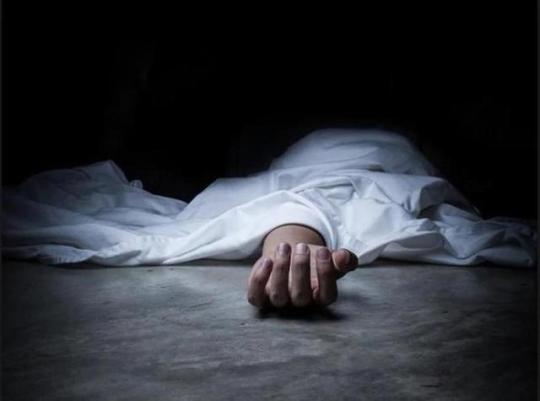
What really happens when you die?
Testimony from professionals who handle the deceased. Article via The Guardian (Rebecca Atkinson and Sarah Tavner). Link.
Dr Clare Gerada
General practitioner
When you die, you have to have your death certified by a doctor and a death certificate or a cremation certificate issued. If we have had contact with a patient in the previous two weeks and know the cause of death - if someone has been terminally ill, say - we can sign the death certificate immediately. If we haven't seen the patient in the two weeks before their death, or if they have died after being discharged from hospital, then we must report it to the coroner, who may request a postmortem. The coroner may also request a postmortem if drugs or alcohol are suspected, or if there's any suggestion of a violent death. It's my job to say if somebody is dead, not how they died.
What I'm essentially looking for is brainstem activity. The brainstem is the part of the brain where the body's vital functions are controlled - the breathing, the heart, the brain itself; it is the computer room of the body. If that bit of the brain is dead, then the person is essentially dead. You can still have reflex actions, so you may twitch after death.
To certify that someone is dead, you listen to the heart for one minute and feel for a pulse for one minute. You examine for signs of breathing, you look at the pupils to check there is no response to a shining light. If you're not certain, you can rub on the breastbone, which is a very painful procedure: if they are not dead, they'll quickly jump up and say, "That hurt!"
Nowadays there are machine tests for brainstem death that involve connecting up the brain and looking at the activity. Those tests would be done before organ donation.
Rigor mortis is the stiffening of the body, which begins a few hours after death and then after a while starts to reverse. A forensic scientist can estimate the time of death by whether rigor mortis has come and gone.
Most people will die in bed, but of the group that don't, the majority will die sitting on the lavatory. This is because there are some terminal events, such as an enormous heart attack or clot on the lung, where the bodily sensation is as if you want to defecate. Also, many people die on special occasions. People tend to hang on for a birthday or Christmas. I'm not saying that death is psychologically motivated, but there's a sense that people stay alive for these events and their loved ones, and then pass away, so the death rate increases on birthdays and during religious festivals.
When a death is expected, the ideal place for it is at home, in a familiar environment, surrounded by family. But that is becoming a rarer event. What is becoming more common is people being rushed into hospital for what I believe is a more undignified and worse death, in an anonymous room with nurses who are busy. In my view that is a failure of health professionals, because we should be preparing the families of terminally ill people for death, showing them that it doesn't have to be frightening and that they can do it at home. Palliative care is all about making death comfortable - you do not need to die in pain, you can die in a dignified manner. People worry that having a death at home will be horrible and traumatic for the family, but a good death is like a good birth - it is a beautiful event, not at all undignified.
Dr Rob Jenkins
Pathologist
Most people who come to me for a postmortem examination will have died from heart disease. In the elderly, strokes and pneumonia are also very common. The young are more likely to die from accidents, suicide or particular types of tumours one gets in youth. If a young person dies, the likelihood of them having a postmortem is high because their death is much more likely to be unexpected. Many older people who die won't have a postmortem because they are likely to have had a known illness that has led to their death.
The first part of a postmortem is an external examination that notes the condition of the patient, any unique identifiers such as tattoos, evidence of recent medical intervention or injuries. Their notes might say "found dead in bed", but you don't know whether they have fallen and banged their head the day before and have a subtle but significant injury, so you are looking out for things like that.
The internal examination starts with an incision from the sternum to the pubic bone. You go through the skin, fat and muscles to expose the rib cage. Then you cut through some of the ribs for access to the upper organs.
When removing the organs you work in three blocks. The thoracic block contains the throat, tongue, lungs, heart and aorta. Then you have the liver, stomach and pancreas in the second block. The final block includes the kidneys, the remainder of the aorta, bowels, bladder and reproductive organs.
The incision doesn't go all the way up to the chin because we don't want anything to be visible to the relatives if they view the body. So, to remove the tongue and windpipe, we work up under the skin from the chest. You loosen the skin up to the jawline, then you can work the blade to cut around the tongue, across the vessels and pull them down under the jaw.
Once you have removed all the organs, you take them to the bench and go through each of the blocks for more detailed analysis. You look for organ weight - a good indication of heart disease will be a big, heavy, often baggy, heart. You look for vessels blocked by clots or fatty deposits. As you slice through the lungs, you are looking to see if there is fluid where there shouldn't be, if there are tumours or evidence of asbestos exposure. If someone had alcoholic liver disease, one might expect a small, shrunken, scarred liver.
Using a scalpel, the mortuary technician will make an incision at the back of the head and lift up the scalp to reveal the skull. A little hand-held saw is used to cut through the skull. The technician will ask you to observe as they take off the skull in case there is something immediately obvious, such as a brain haemorrhage. They will then take out the brain for examination.
Many good things may come from a postmortem. You may find something that is relevant to subsequent generations - say, if a young mother has died and you find a coincidental breast cancer, you would suggest screening for her children.
If you can't find a cause of death from looking at the organs with the naked eye, you take tissue and fluid samples, which are examined under microscopes and submitted for toxicological analysis.
Once you have finished, everything is put back into the body and the incisions are sewn up. It is not possible to re-site the organs into the positions they held in life, but the body is reconstructed as far as possible. It is cleaned to remove traces of fluid or blood. The hair is washed. You complete the cause of death documentation and the body can be released for cremation or burial.
John Harris
Funeral director
Once the death has been certified, we'll go to the family's home or hospital to remove the body and bring it back to the funeral parlour. Because of health and safety regulations, we have to be careful with manual handling - using stretchers enables us to slide the body rather than do heavy lifting. If someone is being collected from a hospital, they would probably be in a hospital shroud; if it's a removal from a home, they are more likely to be in nightclothes. People don't have the close family networks they used to. It's more frequent these days for someone to have died alone in their house and not be found for two or three days and sometimes two or three months. We have to go in and remove the body, which can be quite an unpleasant experience.
If a body is left untreated at room temperature, it will deteriorate quickly, so at the funeral parlour it will be put into a refrigerated unit until the death is registered. Then, with the family's permission, the body can be embalmed.
With the Muslim faith, an imam will come in and wash the body and wrap it in an unbleached cloth. Hindu and Sikh families will come and do the washing themselves. If the deceased is male, the male family members will come; if female, it will be the women. After embalming, we will dress the body before placing it in a coffin. It depends on the size of the person, but usually two or three people do the dressing. The family usually provide clothing - a favourite outfit or something apt. African families often provide full robes and headdress, and Chinese families will bring spare clothing to go with the deceased on their journey into the next life. So we dress them and put all the spare clothing around them in the coffin.
If the body has been dead for a while and the skin has deteriorated, you have to be very careful. Often, a person may have had a lot of drips and incisions and certain drugs, which can affect the skin, so the skin may be fragile, almost like paper, or weeping. If this is the case, we dress the body in a plastic bodysuit under their clothes to protect the clothes and prevent leakages. Once the body is dressed, and hair and make-up have been done, the body is placed in the coffin and put in a private viewing room. It can stay there for a day, or longer if required. The longest we've had a body in our chapel is 13 months.
A lot of my work is arranging for bodies to go back to their home abroad. About a fifth of our work is repatriation now because of the cultural diversity of the area we are based in - east London. This requires tropical embalming because the body may be kept for longer. Tropical embalming takes longer and uses stronger chemicals. Ghanaian funerals, for example, can be anything from two months to two years after death. We've had bodies here for three or four months before they've been flown home to Africa for the funeral.
Karen Koutandos
Embalmer
The body is brought out of the fridge and removed from the body bag or the sheets in which it has been wrapped. I gently clean the deceased with a formaldehyde or disinfectant spray. The body might be quite clamped with rigor mortis, so I massage the hands and limbs to work it out, then make an incision to raise an artery so I can inject the formaldehyde. I tend to use the brachial artery under the armpit, or the femoral artery in the groin area, to avoid incisions being seen, which can be stressful for the families when they come for a viewing. As the formaldehyde flows through the body, you begin to get colour and a more lifelike appearance. The features will plump out slightly and the deceased will look less drawn.
If a body is going abroad, the strength and amount of fluid used is increased, to ensure preservation and sanitation for a longer period.
After the formaldehyde, I drain the body of blood and fluid from the organs and chest cavity. I make an incision just under the rib cage and insert a metal suction tool, known as a trocar, attached to a suction pump. I then puncture the internal organs to drain the fluid. I remove the contents of the intestines, bowels and bladder, too, as these can give off gases and smell. I don't come into contact with the fluids. It's very clean and tidy. After I have drained the body, I distribute a litre of cavity fluid between the thoracic and abdominal cavities so that all the tissues are saturated and do not smell. Although the bowels will have already been emptied, I put an incontinence pad on the body to protect the clothing and the coffin.
We have to take out pacemakers because they can't go into the crematorium. Usually you are told that the person has a pacemaker that needs to come out, but if you are not, you can see the incision where it has gone in.
Next, I pack the throat and nose with cotton wool to stop fluid seepage. If the deceased doesn't have teeth, I put cotton around the mouth to plump it out a little; if they have dentures, I put them in place. I then stitch the mouth closed from the inside. Sometimes glue is used but I do not like the white residue it can leave after it has dried. I dry the eyes and insert plastic half-moon caps under the lids to help them hold their shape, and a touch of Vaseline helps to hold them closed. If the eyes are not dried, they can give the appearance of having a tear, which may be distressing to the family.
I will wash and style the hair, ensure that the men are shaved and any nasal and ear hair removed. Nails are cleaned and cut. It's a myth that your hair and nails keep growing after you are dead - what actually happens is that your skin retracts, so they appear longer. Even if the family are not planning to view the body, I like to make sure everything is done thoroughly in case they change their minds.
I try to make the face look peaceful because this is the last memory the family will have and I want it to be a good memory. I use very few cosmetics, just enough to take away the "waxy look" that can occur.
Of the bodies that come to the funeral homes I work in, around 90% will be embalmed. The ones that don't will be where the family have refused or the funeral is taking place very quickly. Embalming is an art. The deceased is always treated with respect and I always do the best job I can. I believe that you have to care about what you do. When you stop caring, then it is time to leave the profession.
Michael Brown
Crematorium technician
All coffins have a card with a number that is checked against the nameplate on the coffin before cremation. That card goes on the back of the cremator so we can keep track throughout. There is only room for one coffin per cremation chamber, so it's impossible to cremate two people at once.
I often get asked about taking the bodies out and selling the coffins and taking off the brass handles or taking out gold teeth - it's just not done. Everything goes into the cremator. Any metal will melt down and become blackened and mingled with the ashes. You have to be careful with watches, though, because the batteries will explode. The undertaker should have removed any watches before the funeral.
The cremation chamber is fuelled by gas and has to be heated to at least 750C before we can load, or "charge", the coffin. We have to adhere to strict guidelines and everything is logged automatically on the computer - time, date, duration, emissions, smoke levels, carbon monoxide, oxygen levels and the temperature in the different parts of the cremator. The computer prints out a report and every few months these are sent to environmental health.
During the cremation, the coffin burns first, then the flesh and then the organs. After 60 minutes or so, you can look through the spyhole to see how it is going. After 90 minutes, depending on the size of the person, all that is left is the glow of the ashes, no flames. A person with a lot of fat will burn hotter and for longer, up to three hours, whereas a small, frail person may take 80 or 90 minutes.
People think wicker and cardboard coffins are saving the planet, but they burn very quickly instead of creating a slow, even heat like wood. That means you need more heat to cremate the body, so use more gas. It's also more hazardous for us, because they catch alight so quickly and harder on us because we can sometimes see the body through the wicker.
Once there are no more flames, you can stop the cremation and rake it out using a 15ft stainless-steel rake. There are no short cuts. We clean out the cremator every time.
All that is left are the ashes from the body, plus nails and screws from the coffin and any artificial steel joints or metal plates. There may also be some bone fragments left. It tends to be the hip and the shin bones, because they are quite large. There will be more bones if it is a large-framed or young person. Young bones are stronger and reduce less easily. The remains are raked into a steel bin at the bottom of the cremator to cool, before being transferred into a machine called a cremulator, which contains steel balls that grind down the remains into a fine ash. Your ID card goes into the cremulator, along with a plastic urn with your cremation number on it that the ashes fall into at the end. The cremulator filters any artificial joints or metal and these are buried in a deep hole at the back of the crematorium, although we are looking into ways of recycling them.
The cremulator may sound callous, but breaking down the remains is important because if you are going to have a scattering it means the remains can be dispersed as a fine ash rather than as bones, which is less distressing for the family.
We carry out the whole process of cremation and cremulation as if we were doing our own family - with the utmost dignity at all times. It's not right to be slapdash.
Gary Burks
Cemetery operations manager
If a person buys a grave plot, they have a choice of that grave being used for anything between one and five people. For a single grave, the law requires that the coffin be buried under at least 3ft of earth, unless the ground conditions are suitable and then the shallowest a coffin can be buried is beneath 2ft 6in of soil. The ideal is light, dry soil, not wet, heavy clay. With a grave for five people, the first person would be buried at 11ft and the next coffin would go in at 9ft 6in and so on. You have to have at least six inches between each coffin in a multiple grave.
If a body were buried illegally in a shallow grave less than 2ft deep, the decomposition rate is only 18 months to three years. That's banking on disturbance by small mammals and insects. Whereas, with a proper burial, with the coffin deep in the ground, the decomposition rate is much slower. The ground conditions affect the decomposition rate. If the coffin is sealed in a very wet, heavy clay ground, the body tends to last longer because the air is not getting to the deceased. If the ground is light, dry soil, decomposition is quicker. Generally speaking, a body takes 10 or 15 years to decompose to a skeleton.
Some of the old Victorian graves hold families of up to eight people. As those coffins decompose, the remains will gradually sink to the bottom of the grave and merge. The coffin at the bottom will often be the first to collapse and may pull down the remains above it.
Graves are dug by machine, where possible. On our new sites, where there is more room, we use a mechanical digger similar to the type you might see on the roads. We are told two days in advance what the coffin size will be. So we tailor the grave to fit.
With a reopened grave, or in a traditional area where you have had to move memorials to get to the grave, you are likely to be digging by hand. With good soil conditions, it's possible to hand-dig a grave in 1½ hours. But I've experienced it taking five hours because of roots or hard ground. A dry summer will make the ground very hard for up to 2ft. A hard frost will mean 6in of ground is frozen solid.
For £27,000 you can buy a vault grave. This is the most expensive grave we have. We excavate a big hole and concrete the sides and bottom and then put brickwork and a landing on the top. Generally, the coffin is encased in concrete - or entombed, as we call it. The coffin can be wood, but it must be sealed, usually using lead or zinc. We do this to stop noxious fumes and because we don't backfill the vault, so if you moved the landing off you could look down and see remains in the grave.
Sometimes we do exhumations. The grave owner must obtain an exhumation licence before we can do this. There have been cases of people who have moved away from the area and wanted to take their loved ones with them, or wanted to transport them back to their roots abroad. Some people have an aversion to burial and decide they would rather have a cremation after all.
Dean Fisher
Resomation technician
One of the biggest problems with cremation is the amount of mercury going into the atmosphere and the ecosystem. In Britain, about 16% of the mercury that goes into the atmosphere is caused by cremations. Resomation is a greener alternative to cremation. It uses water, potassium hydroxide and steam heat to dissolve the body. At the moment there are only a few resomation chambers in operation in the world, all of them in the US - ours is at Mayo Clinic, Rochester, Minnesota - but there has been interest from several UK councils and cemeteries about installing them. It does offer people a greener option.
We place the body in a basket with small holes in it and slide the body into the round resomation chamber. Once you've loaded the body, you input the temperature, body weight and duration. We calculate the amount of chemical needed by the size of the body.
Once the body is in the sealed chamber, it is immersed in around 425 to 500 litres of water mixed with around 15 to 20 litres of potassium hydroxide. A coil running though the unit generates steam, which heats all the ingredients to 150C, and then a recirculation pump creates a whirlpool effect that helps the body to dissolve. All the tissue, muscle, hair and nails inside the unit will dissolve. Resomation turns the body back into its original elements. It breaks down the body and neutralises everything, including the chemicals used to preserve the body, such as formaldehyde.
What we're doing is speeding up the natural process of being in the ground, breaking down the body in hours instead of 20 or 30 years. All that is left at the end of a resomation cycle are bone remains and liquid.
Only certain clothing fibres will dissolve during resomation, though. Cotton will not dissolve, silk and wool will. If you had on an outfit that was half wool and half cotton, you'll see cotton fibres left in the basket with the bone shadows at the end.
With cremation, only large bones will be left. With resomation, all the bones are left. Because the body lies in a basket in the resomation chamber, we can lift out the skeleton bone by bone. These are placed under a heat lamp overnight to dry. What we call the bone shadows, which are pure calcium phosphate, sterile and white, are then placed in the cremulator, which turns the bone into a fine powder similar to white flour - more aesthetic for family members than cremation ashes, which are grittier and blackish-brown.
The innocuous fluid left at the end of the process contains what the body is ultimately comprised of - nitrogen, phosphate, proteins, amino acids, salts and sugars. It's got a greenish-brown tint and it flows just like water. This liquid contains no DNA so has no detectable link with the original body. It can be safely disposed of or used on land as a fertiliser if requested.
I don't think resomation will necessarily replace cremation or burial, but I think it will grow in popularity.
1K notes
·
View notes
Text
How you see your <b>doctor</b> could be forever changed by the coronavirus pandemic
“Patients have always liked it,” Clare Gerada, a family doctor in London, told CNBC. “It's been doctors that have been resistant to introducing it. ... “We can't carry on having paid the price we paid … to go back to doing things the way ...
from Google Alert - Back Doctor https://ift.tt/3bUQfgp
0 notes
Text
Clare Gerada: Doctors on the covid-19 front line also need to protect themselves and their colleagues.
Clare Gerada: Doctors on the covid-19 front line also need to protect themselves and their colleagues.
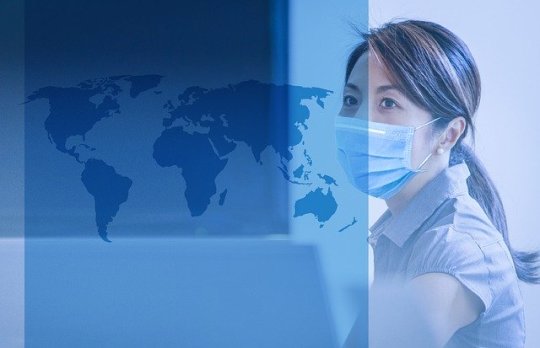

A new interesting article has been published in BMJ. 2020 Mar 24; 368:m1121. doi: 10.1136/bmj.m1121. and titled:
Clare Gerada: Doctors on the covid-19 front line also need to protect themselves and their colleagues.
Authors of this article are:
Gerada C.
A summary of the article is shown below:
See link below
Check out the article’s website on Pubmed for more information:
View On WordPress
0 notes
Photo
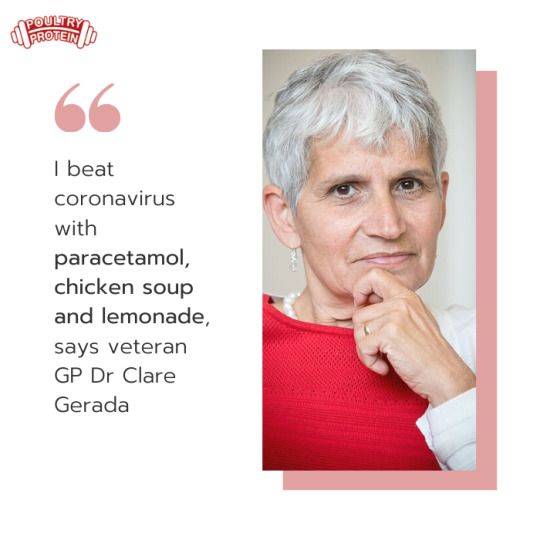
Dr Clare Gerada was bed ridden with coronavirus but has now recovered with the help of paracetamol, chicken soup and lemonade.
.
Read Here- https://www.poultryprotein.com/beat-the-bug/
.
0 notes
Text
Dr Clare Gerada describes her experience with coronavirus
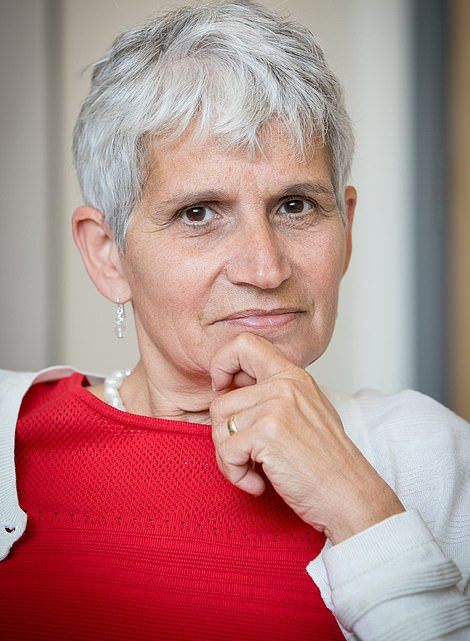
Coronavirus circumstances within the UK are quickly climbing, and the spiralling outbreak yesterday prompted Boris Johnson to take the drastic step of advising towards all social contact in a dramatic measure to delay the unfold of an infection.
However regardless of these distancing measures, the federal government estimates many extra folks will catch the illness which has to this point killed…
View On WordPress
0 notes
Text
<b>Good Morning</b> Britain thrown into chaos as coronavirus sufferer's phone keeps ringing during ...
GOOD Morning Britain was thrown into chaos during a coronavirus sufferer's video-link interview earlier today. Dr Clare Gerada had called in from her ...
from Google Alert - good morning https://ift.tt/2QexBHx
0 notes
Photo
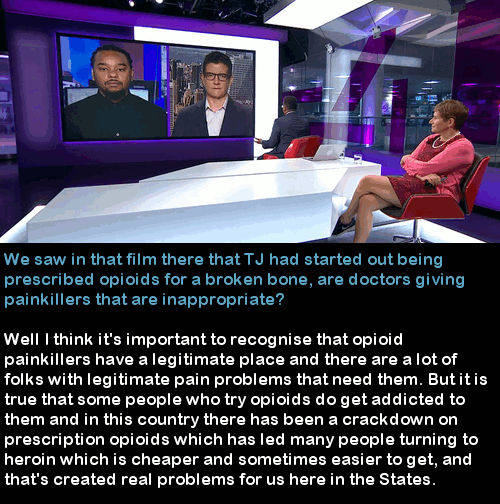
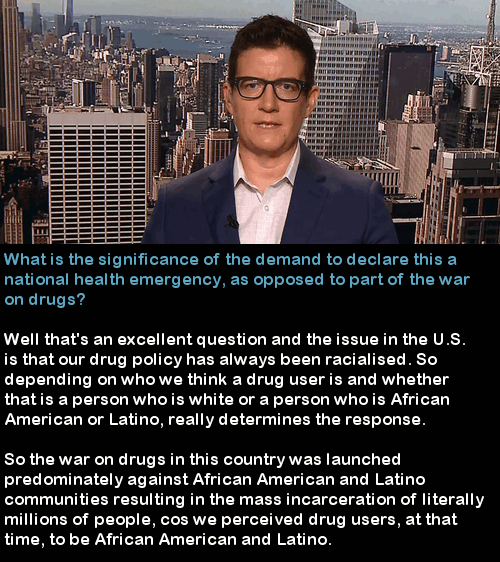
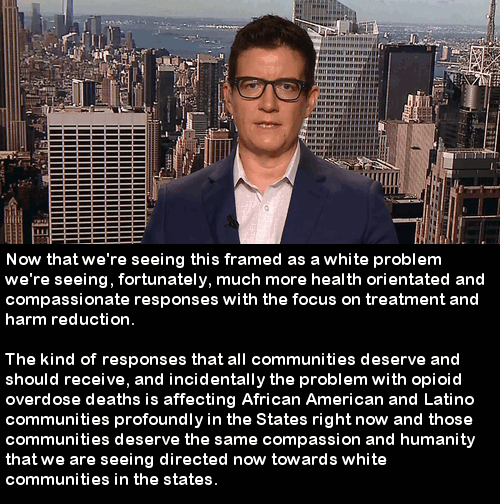
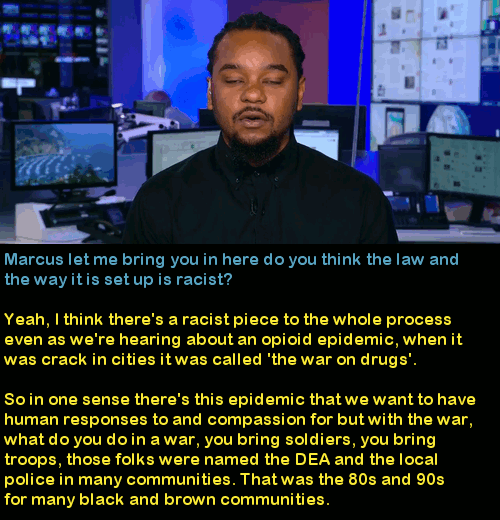

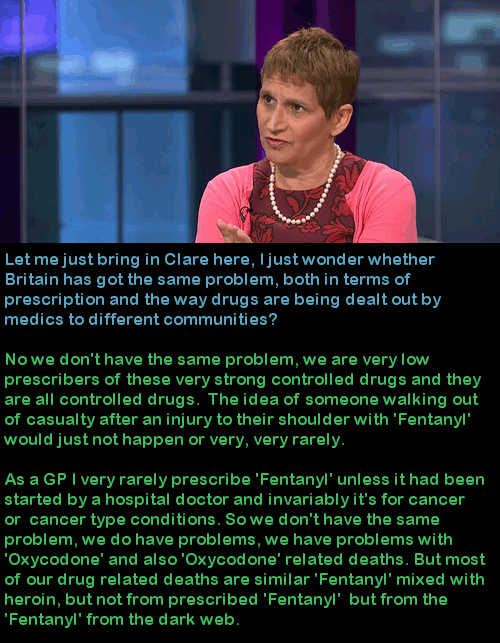
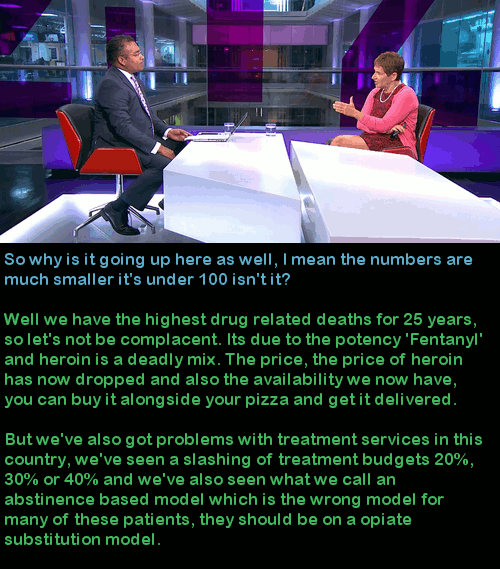
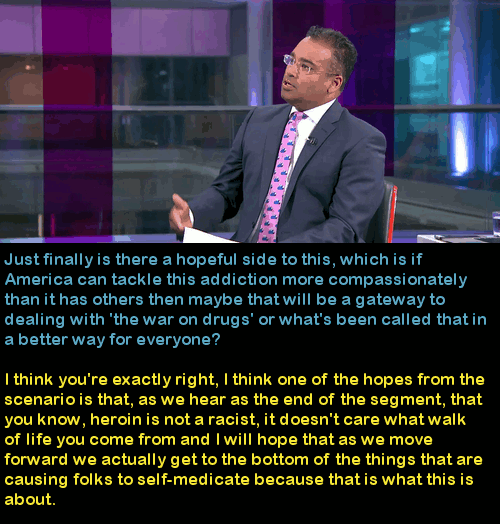
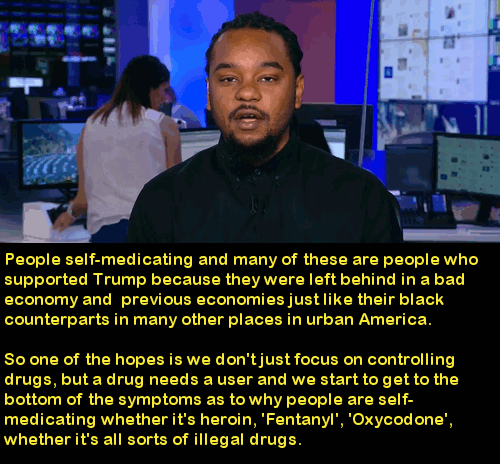
Julie Netherland, Office of Academic Engagement for the Drug Policy Alliance
Marcus A Hunter, Associate Professor of African American Studies, UCLA
Dr Clare Gerada, Former head of The Royal College of General Practitioner's
#drugs#opioids#addiction#drug policy#USA#UK#race#african american#latino#war against drugs#fentanyl#oxycodone#heroin#prescription drugs#channel 4#illegal drugs#self-medication#gifset#despair
96 notes
·
View notes
Text
Plâncton além do cartoon

Em geral, as pessoas que vivem longe do mar ou pensam nele apenas como área de lazer dificilmente pensam em plâncton... A não ser quando o mar está coberto por algas (eutrofização) ou acontecem as marés vermelhas. Mas o fato é que os plânctons existem desde priscas eras e sustentam a chamada vida elevada. Ou seja, sua importância é crucial e vai muito além da única figura de plâncton reconhecida pelos habitantes do planeta – o personagem de desenho animado Bob Esponja.
Assim, enquanto alguns se agarram às fontes de energias fósseis (derivados do petróleo) e alardeiam que sem petróleo a humanidade é incapaz de sobreviver, cientistas de diversas partes do mundo desenvolvem ferramentas capazes de aproveitar tudo que o plâncton tem de melhor. E o melhor do plâncton é excelente! Ele pode tanto resolver a questão da poluição dos oceanos, quanto gerar energia limpa e alternativa.
Hoje eu quero abordar o plâncton como gerador de energia alternativa.
As pesquisas relativas ao uso de plâncton para geração de energia se desenvolvem rapidamente. Há dois anos, cientistas já haviam explorado com sucesso as reações químicas das matérias orgânicas em decomposição do solo oceânico para criar células combustíveis. Neste caso, as células combustíveis provêm níveis baixos de eletricidade com muitos meses de duração. São células combustíveis estacionárias obtidas por equipamentos que são se movem, como por exemplo, os ‘hidrofones’ usados pela Marinha dos EUA ou pelos pesquisadores da Universidade Estadual de Ohio (EUA) para prever e acompanhar sismos.
Há alguns meses, a mesma Universidade Estadual de Ohio (OSU) anunciou o desenvolvimento de novo uso deste tipo de energia combustível – oriunda de organismos em decomposição -, mas adquirida não do fundo do oceano e, sim, das colunas superiores das águas do mar.
De acordo com os cientistas da Escola de Oceanografia e Ciências Atmosféricas da OSU, está clara a possibilidade de uso do plâncton como fonte combustível e, especificamente, a originária das colunas superiores das águas dos oceanos é rica em microrganismos que fazem o ‘vaivém’ dos elétrons para abastecer os eletrodos celulares.
Ao se aproveitar da capacidade do plâncton, cria-se o potencial de um combustível gerado por instrumentos autônomos e móveis – e não mais apenas instrumentos estacionários. Este novo tipo de instrumento pode captar a energia do plâncton ao deslizar através da água, pegando o plâncton como um tubarão-frade, e convertendo isso em eletricidade. Já há instrumentos movidos a este tipo de energia. Com sensores acoplados a eles, são utilizados para mapear as mudanças químicas e as propriedades físicas do oceano.
A energia é gerada tanto pela oxidação direta do sulfídio dissolvido – subproduto da decomposição micro biótica – como pelo processo de RESPIRAÇÃO dos microrganismos que se ligam a si mesmos ao anódio.
A energia gerada não é em grande escala. Mas, se um instrumento desliza livre de tensão pelo oceano e absorve o plâncton no seu caminho, poderia estender sua missão por um período de meses - ou, eventualmente, anos - sem ter de substituir uma bateria. Embora pareça modesta, em termos de produção de energia, o oceano tem uma grande capacidade para a geração de combustível.
De acordo com Clare E. Reimers, professora da Escola de Oceanografia e Ciências Atmosféricas da OSU, a matéria orgânica é o combustível básico do oceano. Os detritos de plâncton se derramam para o fundo do mar, constante e rapidamente – e a maior parte é degradada de forma natural. É o que produz o dióxido de carbono e uma pequena quantidade, eventualmente, torna-se petróleo, gás natural, pedaços de metano ou alguma outra fonte de combustível. “O combustível está lá – na lama, ou plâncton. E embora nosso foco esteja no desenvolvimento de energia para equipamentos oceanográficos, quem sabe o que se irá desenvolver além disso? ", indaga Reimers.
A cientista acrescenta que a mesma tecnologia poderia funcionar alimentando-se de outros substratos orgânicos... como lodo de esgoto. Simplesmente, a extração acelera a decomposição.
O processo ainda não está aperfeiçoado. Os pesquisadores têm de lidar com a natureza corrosiva da água do mar em contatos elétricos e, no caso da célula de combustível de plâncton, desenvolver uma energia eficiente como meio de recolha e concentração.
Isto é, já está provado em comprovado. Talvez se os interessados em novas fontes de combustível – ou seja, todo mundo, destinarem parte da verba gasta com propaganda sobre como a humanidade se extingue sem petróleo a mais pesquisas sobre o tema, a Nova Energia se espalhe mais rapidamente pelo planeta.
Para este resumo li as seguintes fontes:
1 -http://webcache.googleusercontent.com/search?q=cache:http://www.sciencedaily.com/releases/2004/08/040804083038.htm&gws_rd=cr&ei=PorhVsWoPImWwAT_jqTgBA
2- https://pt.wikipedia.org/wiki/Pl%C3%A2ncton
3- http://www.altenergymag.com/content.php?issue_number=07.02.01&article=planktos
4- http://earthobservatory.nasa.gov/Features/Phytoplankton/
5- https://www.sciencedaily.com/releases/2004/08/040804083038.htm
6- https://scripps.ucsd.edu/news/research-highlight-powered-plankton
Trata-se de material em inglês porque realmente não achei nada em português. Se alguém ler este artigo, se interessar E souber de bom material em português, ficarei grata se compartilhar.
Por Jana de Paula - J'adhamn
P.S. Obviamente não detenho nenhum direito autoral sobre este conhecimento e muito menos sobre o Plancton do Bob Espoja
0 notes
Text
For doctors with mental illness, ‘help me’ can be the hardest words | Clare Gerada
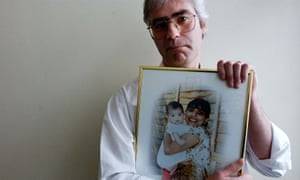
In a portrait taken in 2003, David Emson holds a photograph of his wife, Daksha, and their daughter, Freya. Photograph: Martin Godwin for the Guardian
The charity Mind has found that almost half of all patients consulting their general practitioner do so for problems with their mental health, such as anxiety and depression. This will not be a surprise to most GPs. These illnesses are common; but there is now also a greater willingness to talk about them, and to seek medical help. That is to be welcomed.
But the taboo persists, in some areas more stubbornly than others. One of those, paradoxically, is the other side of the consulting room. Doctors also suffer from mental illness and, in fact, have high rates compared with the patients they see. One survey found 85% had experienced some kind of mental health problem.
It's time to end the workplace taboo around mental health | António Horta-Osório
Read more
Sometimes these problems escalate way beyond our...
Source: For doctors with mental illness, ‘help me’ can be the hardest words | Clare Gerada
0 notes
Text
Tweeted
So the outcome of Brexit is too sell off the #nhs !! Come on. Was this the plan. Who is deciding this? This is so frightening. https://t.co/h6s84garbZ
— Clare Gerada (@ClareGerada) December 21, 2017
0 notes
Text
O JOGADOR:
oi, benzinhos, me chamo myn, 23, ela/dela. bom, como o mestrado acabou e oficialmente formada, então estou bastante livre por tempo indeterminado, eu só não digo que consigo postar todos os dias porque sou uma tartaruga para escrever.
O PERSONAGEM:
Tentando evitar as câmeras, vem SUN YOUNG CHO, uma CHEF. Vindo de SEOUL, CORÉIA DO SUL, conta com VINTE E NOVE ANOS, dos quais passou SEIS sob os holofotes. Conhecida no meio como SOUTH KOREAN CLARE SMYTH, consideram-na CONFIANTE e RIGOROSA. Ela se parece com IM JIN AH.
― venus fly trap - MARINA ―
SEGREDO/S? ao contrário da maneira com a qual sun young foi apresentada ao público mundial em sua temporada no knives at dawn, a coreana não tem uma origem simplória. a chef, que agora usufrui do status de celebridade internacional com três estrelas michelins em quatro dos cinco restaurantes que levam seu nome, em realidade, é mais nova de uma família que detém o controle de um conglomerado do setor de transporte e navegação. a última de três filhos, e única mulher, de sun young era esperada uma vida fácil, sem empecilhos, se, assim como os irmãos, fosse a epítome da obediência e servitude, mas a morena jamais fora capaz de abaixar as íris amendoadas frente à imposição de poder, o que para a tradicional e rigorosa criação sul coreana era visto como tamanha desonra. ainda que expulsa da família pelo patriarca, a mãe da sonhadora cho desejava o mundo para sua única filha, e herdeira de uma fortuna tão impressionante como a do marido, a matriarca assegurou um futuro para sun young que poucos seriam capazes de prover.
de internatos ingleses e viagens internacionais, a jovem passou para escolas culinárias francesas e suíças, treinando com os mais ilustres até completar vinte e um anos, quando decidiu voltar para a sua terra natal, onde, longe da influência, e dinheiro, da família, lançou o primeiro de seus restaurantes, cosmos, com uma infusão entre contemporânea e tradicional de uma maneira única, logo rendeu-lhe reconhecimento e um convite para participar de uma competição que reunia vinte quatro chefs de diversas nacionalidades e idades, para competir por uma vaga junto aos mais prestigiados nomes da gastronomia mundial. a organização do programa optou por maquiar o passado da coreana, a tornando uma favorita do público pela história, que acrescida do carisma e magnetismo naturais, fizeram dela uma estrela em ascensão, antes mesmo de ganhar o tão almejado lugar à mesa do sucesso.
REPUTAÇÃO? sun young condecorou-se como uma chef de renome internacional, capitalizando a fama gerada pela competição, que aliada às suas habilidades e criatividade, conquistou a atual posição e título de melhor chef mulher do mundo. detentora de uma ética invejável dentro da cozinha, com exceção do pequeno segredo que ela e toda a produção do knives at dawn guardam a sete chaves, e diligência impressionante, não é de se espantar que seu sucesso tenha crescido de maneira exponencial em tão pouco tempo. é da mesma maneira que rege sua vida profissional, que a morena gerencia a pessoal, embora existam rumores de que possui um coração de pedra para o romance, a verdade é que sun young não deseja se curvar a homem algum, o que não a impede de aventurar-se em relacionamentos estritamente físicos, os quais trata como contratos com mais um dos fornecedores de seus restaurantes espalhados pelo globo.
acha-se auto-suficiente e uma ilha quando o assunto é o amor romântico, com cliques seus ao lado de novos beaus circulando com certa frequência pelas mídias, a falsa moralidade de alguns podem julgá-la sem conhecimento do que a levou ao negacionismo de sua necessidade emocional. mesmo que criada em berço de ouro, se pode considerar que suas conquistas, em grande parte, no entanto, se devem ao próprio esforço, catapultando sua imagem e patrimônio a figuras astronômicas. o dinheiro da família, intocado desde que recebeu seus diplomas, e extremamente influente, não seria capaz de colocá-la como finalista do bocuse d’or no mesmo ano do primeiro lugar na competição estadunidense, o que apenas demonstra sua competência, técnicas e talento para a arte culinária. como resultado da veia assertiva e não-conformista apresentada quando adolescente, a chefe acredita que sua vida é sua, e apenas sua para ser vivida, que todos os sacrifícios que faz e fez a levaram para onde está. é embaixadora e patrona de organizações que promovem o empoderamento feminino, além de encabeçar um programa multinacional que oferece oportunidades ímpares para mulheres, de todas as idades e etnias, em situações de vulnerabilidade socioeconômica.
CARREIRA:
knives at dawn, temporada 2 (2015) ― nbcuniversal/competição culinária/competidora e ganhadora;
bocuse d’or (2015) ― bocuse d’or tv/competição culinária/competidora e finalista;
knives at dawn, temporada 8 (2021) ― nbcuniversal/competição culinária/chef convidada e jurada;
INSPIRAÇÕES: daniela soto-innes, monica geller (friends) & jacqueline carlyle (the bold type)
knives at dawn ― uma competição culinária criada pela nbcuniversal, o programa reúne vinte quatro chefes de renome de todas as partes do globo, competindo por um vaga junto à mesa de jurados que são expoentes em seus países de origem. em cada episódio, um país é escolhido, três embaixadores - representantes da cultura, e críticos gastronômicos - são convidados para escolher um prato que represente sua nacionalidade e seu povo. os competidores, agrupados em duplas, têm de reproduzir o prato dado a sua maneira, que será avaliado pelos embaixadores, e os três piores, segundo a opinião convidada, participam de uma prova de fogo, em que o maior nome da gastronomia do país em foco escolhe um ingrediente difundido na culinária nacional e as três duplas têm de elaborar um prato que destaque o ingrediente indicado. ao final o nome de destaque irá julgar as confecções, elegendo o melhor prato da noite e eliminando uma das duplas. o processo se repete até restarem apenas quatro participantes, duas duplas, que irão competir individualmente para a montagem de um prato que represente toda a aprendizagem do programa e quem são como profissionais e seres humanos. a invenção é então julgada por cada um dos chefes nacionais, que, em consenso, escolhem um vencedor, que dividirá um lugar de prestígio junto à eles.
0 notes
Text
Can online GP appointments replace a face to face meeting?
Dr Martin Scurr, Good Health columnist, believes that online consultations can not replace in person appointments
Can online GP appointments replace a face to face meeting?
NO, says Dr Martin Scurr, Good Health columnist:
My 93-year-old neighbour has congestive heart disease and hasn’t seen her GP for two years.
Recently, she has experienced a deterioration in her condition — she is showing signs of heart failure — and I believe she needs referral for treatment. She is too frail and tires too swiftly to speak for long on the phone, so I called the surgery on her behalf.
I sat on the phone (‘Thank you for your patience. You are tenth in the queue and your call will be answered as soon as possible’) for 20 minutes, only to be told that I was not authorised to speak on my neighbour’s behalf.
Eventually, I was able to book a phone call from a nurse at the surgery to my neighbour’s home. But when the call came through, I wasn’t around to pick up the receiver. The nurse let it ring 15 times and then cut it off.
I had tried to warn them that my neighbour’s condition means that, even in her small bungalow, she is not able to get to the phone in less than 20 rings.
There will be millions of people in similar circumstances — people who, like my nonagenarian neighbour, need medical assessment provided in person.
By insisting on initial assessment via phone or website, the RCGP is effectively excluding millions of people, says Dr Scurr
Yet last week the Royal College of General Practitioners (RCGP) announced there is a ‘compelling case’ to continue the emergency measure of ‘total triage’ — where patients are assessed either online or over the phone before a decision is made on whether to book an appointment with a GP in the surgery.
Total triage was established during lockdown to minimise the spread of coronavirus. It was never meant to be a permanent change to the way GPs work. Nor was it ever claimed to be a satisfactory replacement for face-to-face consultations.
But the system has been judged a success partly because it reduced the number of appointments hard-pressed GPs have, so freeing them to tackle the endless form-filling, risk assessments and appraisals generated by the modern NHS.
It means red tape taking precedence over real people.
It also means many more ‘silent’ illnesses and injuries being missed, especially among the most vulnerable members of society — the elderly, victims of physical and mental abuse and those on low incomes.
I don’t blame GPs for this. Many are under the cosh, buried beneath a bureaucratic workload that should not be their priority.
But it means people like my neighbour, with no way to access healthcare, will now effectively be abandoned.
I believe the scheme will cost lives.
Not long ago I saw a 54-year-old woman complaining of a nagging cough. She had spoken twice to other doctors, but shied away from a proper examination.
At first she didn’t want me to look at her chest, either; she just wanted a prescription to make the cough go away.
I was able to persuade her to let me check her over. She removed her top and then, with real reluctance, her bra — and I saw an ulcerating breast cancer, meaning her tumour had broken through the skin. She wanted me to find the wound, yet she could not bring herself to speak about it. And it’s a good job I did get to examine her — the cough she initially called about was due to the fact that the cancer had spread to her lungs. A phone consultation would never have uncovered her condition.
By insisting on initial assessment via phone or website, the RCGP is effectively excluding millions of people.
The calls for ‘total triage’ to replace one-on-one GP consultations is the latest in a series of death blows to what was, at its best, the jewel in the crown of the NHS: the primary care system.
The first blow, implemented almost in secrecy under Tony Blair, was an end to home calls for the elderly by health visitors.
Then came the withdrawal of provision of 24-hour care — night-calls — followed by the disappearance of your right to treatment from a named GP.
All of these have been nails in the coffin of primary care.
The RCGP has seriously underestimated how few people are prepared to talk out loud about their medical worries. Any obstacle, even something as everyday as a phone call, will deter them. They need face-to-face contact with a professional who can draw them out.
The most important moment in a consultation often comes as a patient stands up to go. Indeed, I’ve lost count of the thousands of times when I’ve seen someone hesitate at the door just before leaving and say: ‘Actually, doctor, while I’m here . . .’
That’s often when the real medical problems are uncovered — when they mention a lump, a pain, a crisis in the family, perhaps a bruise that is evidence of a beating or sexual assault in the home.
And those are the kind of problems that get missed during consultations over the phone or via video-link.
There is a real risk of letting healthcare in Britain decline to Third World standards, and we will look back on 2020 as the point at which the GP system became unfit for purpose.
Former chair of the Royal College of GPs doctor Clare Gerada believes the online consultations could replace an in person meeting
YES, says Dr Clare Gerada, Former chair of the Royal College of GPs:
Recently I examined a woman who had what she feared was a cancerous lump in her breast.
Nothing exceptional in that — I am, after all, a GP of almost 30 years’ standing in a busy Central London surgery of nearly 22,000 patients. But this appointment was unusual in that it was my first face-to-face consultation in weeks.
Covid-19 has caused what would normally take ten years of transformation to occur in little more than ten weeks.
Before the pandemic, about 90 per cent of GP consultations were face-to-face; only a tiny proportion were done remotely: online via email or by video-call or telephone.
But at the height of the pandemic this reversed, and now around 70 per cent of consultations are done remotely.
Hence the woman with the lump — which didn’t need further investigation — was the first patient I had physically examined in weeks.
I can’t see things ever going back to how they were. Nor do I think they should, because it gives the GP more time, and that can only be good for patients.
Don’t get me wrong, I miss seeing patients in person and enjoy their company.
But consider this: how much time does the average GP spend walking to their surgery waiting room, calling their next patient, waiting for the person to respond and walking back to their consulting room?
Then there is the time the patient — completely reasonably — takes settling down and removing their coat. I believe it totals days each year. Surely there are better ways to use that time, such as helping patients.
And let’s not forget that, pre-pandemic, people had to wait more than two weeks on average for a GP appointment. Fewer face‑to-face consultations means we can now see you more quickly when you really need it.
In our practice we start most of our appointments online via an electronic consultation, similar to an email.
The patient fills in a specially designed questionnaire on our practice website, answering questions a GP would normally ask if they were sat in front of them; the patient explaining in their own words what’s concerning them.
That comes into an online ‘hub’, which we monitor during surgery hours.
If any answer generates a red flag — a possible medical emergency — the system directs the patient to ring 111 or 999, or to seek urgent medical advice.
For others, the GP decides if an email reply is appropriate, or if a prescription needs to be sent to the pharmacist. Or, indeed, if calling the patient or suggesting they come in is needed.
It is not a system that will suit everyone — perhaps not the elderly, and those without a computer or a smartphone (around 26 per cent of over-75s don’t have one) — and some doctors might be reluctant to adopt this new way of working.
But as well as saving time, think of how much less embarrassing it is to start off a consultation for a mental health or sexual health problem this way. It is much less intimidating to fill in a form than squirm in a chair in front of a doctor.
The system has proved safe and effective, but even video-calls don’t tell the whole story.
As a GP you build a picture of a patient from their posture, even the time it takes them to walk from the waiting room. And it’s hard to pick up on emotion digitally, so we must never lose face-to-face consultations altogether.
But there are plenty of positives to making the most of modern technology.
This change has not only taken place in general practice; surgeons and hospital doctors are increasingly using video-calls and say it helps them see more patients.
Before the pandemic, the NHS was notoriously slow to change. But suddenly, needs must. Healthcare will never be the same again.
The post Can online GP appointments replace a face to face meeting? appeared first on Shri Times.
via Blogger https://ift.tt/2Om1pR5
0 notes